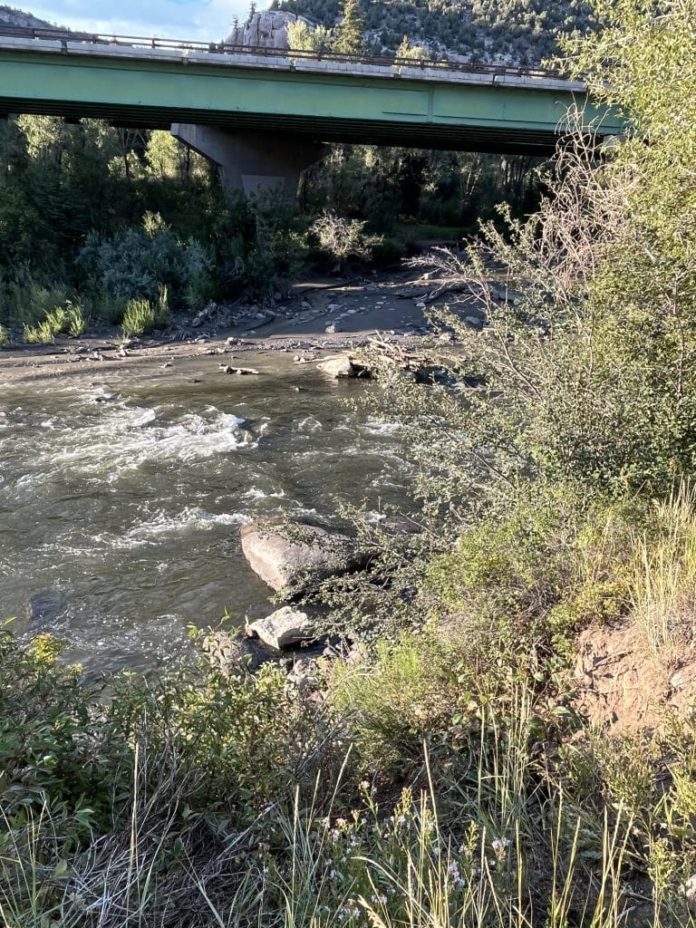Chip Bair/Vail Daily archives
Bob Nock can’t remember a summer quite like this one, and it’s costing him money.
Nock owns Eagle River Anglers in Eagle. The business runs guided trips along the Eagle River and elsewhere. The “elsewhere” part of the business is going well. The Eagle River part is a different story.
A combination of warm water and a recent sediment-caused fish kill has prompted voluntary fishing closures on the Eagle River. The Aug. 16 flow is believed to have come from intense rain putting sediment into the river from Milk Creek, Rube Creek and Alkali Creek.
The current closures are for the heat of the day between Wolcott and Eagle, and all day between Eagle and Dotsero. Nock said he’s happy to accept the guidance that comes down from the state.
“They really get into the nuances — there are a lot of different stress levels,” Nock said. Fish in that stretch of the river are still under stress, Nock said, adding that stressed fish are more likely to be killed by catch-and-release fishing.
Nock said his rule of thumb is to keep a fish netted and in the water for at least as long as it takes to hook and reel in that fish.
For the fish, immediate release would be “like running a marathon, then getting into the rink with Muhammad Ali in his prime,” Nock said.
Fishing guides keep a close eye on water temperatures. Those temperatures have started to decline in spots. That’s why Colorado Parks and Wildlife has lifted the voluntary closure on the Colorado River between Red Dirt Creek in Eagle County and the town of Rifle.
Kendall Bakich, a biologist with Colorado Parks and Wildlife, said the closure on the Colorado was lifted for a couple of reasons. First, the Colorado carries more water than the Eagle. That bigger river also benefits from frequent releases of cool water from large, high-elevation reservoirs.
On the other hand, the Eagle carries less water — and has experienced low streamflows this summer. It also doesn’t have the advantage of having high-elevation reservoirs to add cooler water to the mix.
Bakich said the restrictions on the Eagle could be lifted as soon as this weekend, depending on whether moderate temperatures continue.
John Packer, owner of Fly Fishing Outfitters in Avon, noted that Monday’s mid-afternoon water temperature at Catamount, a bit upstream from Red Dirt Creek, was 62 degrees. That’s fine for fishing.
Packer noted that he hasn’t seen temperatures at Wolcott above 65 degrees in several days.
Nock said he and his guides set a lower upper-temperature limit for fishing.
Fly Fishing Outfitters guides take clients to the Colorado and Roaring Fork Rivers, as well as higher elevation areas. Most of the company’s trips right now are run early in the day.
That said, Packer said conditions are good on much of the upper Eagle. While the bigger fish are usually in the lower Eagle, Nock said he’s trying to keep clients happy by divulging some of his private stash of higher-elevation spots.
And, he added, most clients are “amazingly cooperative” about the voluntary river closures.
“If you have an afternoon, there are plenty of places,” Nock said.
That’s because most people use fishing as a way to get away from day-to-day stresses, both physically and mentally. It’s hard to think about work problems if you’re paying appropriate attention to what you’re doing on the river, he added.
As summer eases into fall, air and water temperatures will continue to drop. That’s good news for both the fish and those who’d like to cast a fly.
This summer has been “terrible for business,” Nock said. But, he added, “I’m in this for the long haul.”
Credit: Source link






























